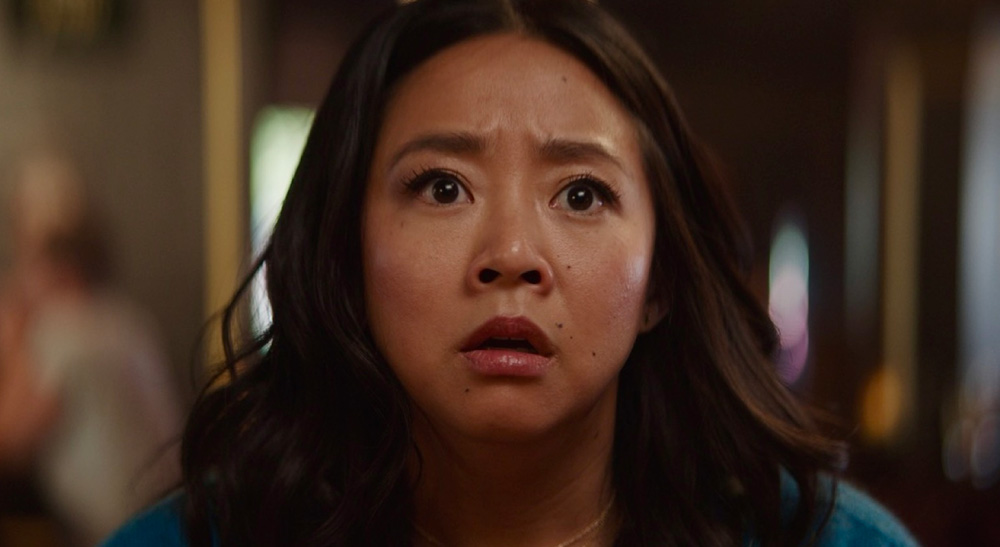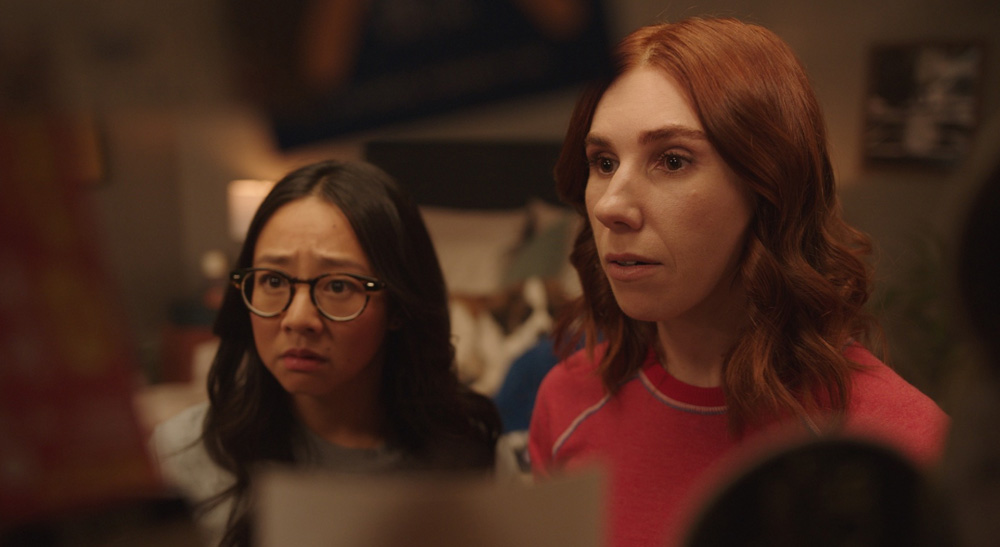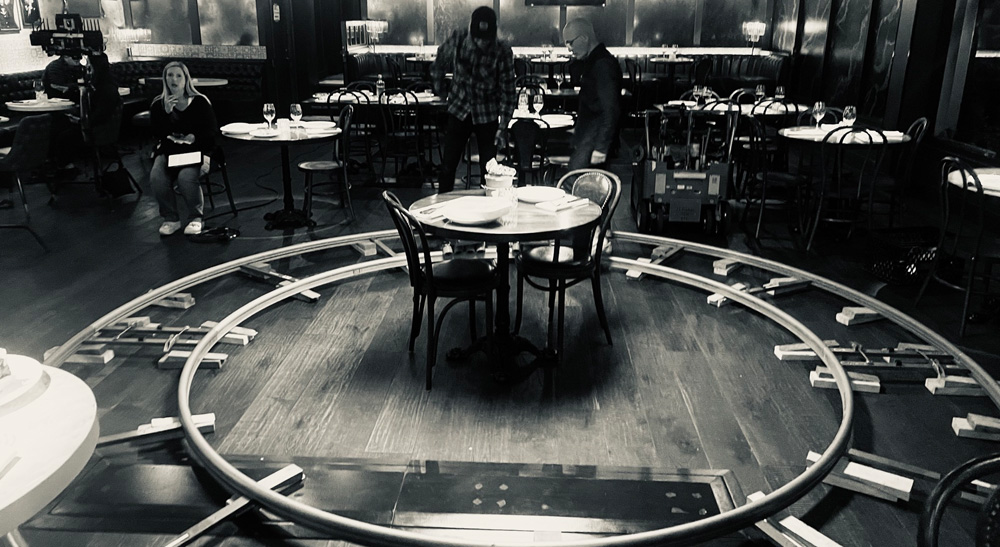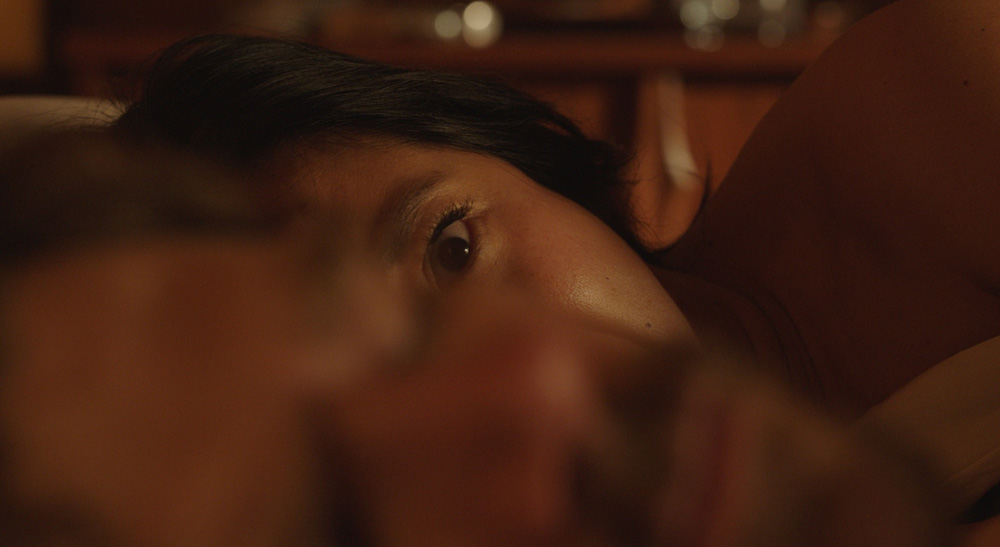Pivotal scene captured in open gate at 220 fps with Blackmagic Design’s first large format camera.
Fremont, CA, USA – Wednesday, February 19, 2025 – Blackmagic Design today announced that DP Judd Overton used the Blackmagic URSA Cine 12K LF digital film camera on Peacock’s new hit comedy series “LAID.” The camera was used to shoot open gate at 220 fps for one of the comedy series’ funniest scenes.
“LAID,” which has become one of Peacock’s most popular new shows, tells the story of Ruby, played by Stephanie Hsu. Ruby finds out her former lovers are dying in unusual ways and must go back through her dating timeline to confront her past in order to move forward.
The series is directed by Nahnatchka Khan, with cinematography by Overton. Overton previously worked with Khan on several projects including the hit series “Young Rock” and the slasher time traveling comedy film “Totally Killer.” On both of these projects, as well as on shows such as “Ghosts,” “Killing It,” “God’s Favorite Idiot” and “No Activity,” he used a number of different Blackmagic Design cameras.

On “LAID,” Overton shot in a mix of different formats, lenses and styles to capture the show’s swings between rom com and comedic morbidity, with over the top violence as Ruby’s exes die in a variety of spectacular or silly ways, and adorable meet cute charm that often jumps to the stark reality of physical stuntwork.
He explained: “Each moment mattered, whether it be on the cute side of things or if it was a death scene where production did not pull any punches. For the really over the top scenes, Natch [the director] wanted me to make sure the audience stayed in each moment but also have it feel like the scenes belonged in the world of the show.
“So we decided to show the deaths through Ruby’s eyes and give the audience a view of how she reacts. Her reactions to things, like watching a baseball game in a bar and seeing her professional baseball ex getting hit in the head in slow motion, are what really sells the story.”

Capturing the untimely passing of the baseball player required high quality slow motion work, since the sports station broadcasting the game kept replaying the up close shot in all of its gory, over the top detail.
Overton used URSA Cine 12K LF to capture the image of the moment of impact and the quesy after effects. He relied on the camera’s large format sensor and its 16 stops of dynamic range to ensure that post production had enough data to add just the right touches of damage.
“The URSA Cine 12K was the perfect camera for shooting the F B to the T (Foul Ball to the Temple) sequence. One of the features that really stoods out was we could use the full sensor without needing to crop for shooting different speeds and resolutions, which let us shoot the scene open gate at 4K at 220 fps,” he explained.
Beyond the URSA Cine 12K LF, Overton also used Blackmagic Pocket Cinema Camera 6K G2 digital film camera for a number of rig and FaceTime insert shots.

About Blackmagic Design
Blackmagic Design creates the world’s highest quality video editing products, digital film cameras, color correctors, video converters, video monitoring, routers, live production switchers, disk recorders, waveform monitors and real time film scanners for the feature film, post production and television broadcast industries. Blackmagic Design’s DeckLink capture cards launched a revolution in quality and affordability in post production, while the company’s Emmy™ award winning DaVinci color correction products have dominated the television and film industry since 1984. Blackmagic Design continues ground breaking innovations including 6G-SDI and 12G-SDI products and stereoscopic 3D and Ultra HD workflows. Founded by world leading post production editors and engineers, Blackmagic Design has offices in the USA, UK, Japan, Singapore and Australia. For more information, please go to www.blackmagicdesign.com

